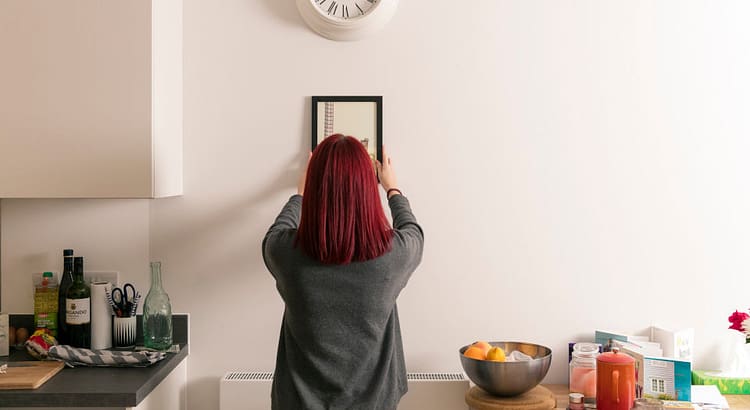For many first time buyers, the most daunting part of the home buying process is saving for a house deposit. In particular, many wonder how to save for a house on a lower income and whether it’s even possible to do it at all.
Pocket Living is built around the idea that everyone should have a fair opportunity to get onto the housing ladder, so we’re going to share our best tips on saving for your first home, whatever your circumstances. We’ve included a range of information on ISAs, bank accounts and more to show you that there are plenty of options to consider to get yourself onto the housing ladder. Let’s get started.
How much do you need to save to buy your first home?

You can’t build a plan to save for a house deposit until you know how much money you’ll need to save. Generally, deposits are a minimum of 10%-15% for second-hand homes and (at the moment at least) 15-20% for new build homes, although there are several reasons why it’s advantageous to save a larger amount if possible.
Improved mortgage deals
The more money you have saved for a deposit, the lower interest rates you will be offered on your mortgage by lenders.
Smaller repayments
When you have a larger deposit, you won’t have to borrow as much money, meaning you’ll have smaller monthly repayments.
Better chances of getting a mortgage offer
You’ll be more attractive to lenders when they conduct their affordability assessment on you if you have more money saved for a deposit, plus you’ll usually have more mortgage options to choose from.
Have a look around to get an idea of how much properties cost in your desired area. Keep in mind that if you’re interested in a Pocket home, it will be at least 20% cheaper than the surrounding market. Once you’ve worked out roughly how much you need to save to buy your first property, you can build a realistic savings plan that will help you achieve your goal.
How to save for a house

The deposit is the biggest thing you’ll need to save for when buying a home, so it’s best to put a savings plan into action as soon as possible. ISAs and bank accounts are a good place to start.
One good option is to get a Lifetime ISA, or LISA, which is a Government scheme that helps first time buyers boost their deposits. It allows you to save up to £4,000 every tax year until you turn 50, and the Government will add a monthly bonus of 25% to the amount saved.
If you have a long-term savings plan, the following are good options:
Cash ISA
Also known as an Individual Savings Account, a Cash ISA allows you to save without paying tax on the interest earned, although there is a limit in how much you can pay into it yearly.
Stocks and Shares ISA
If you put money into a Stocks and Shares ISA, it will be invested in stocks and shares, giving you a return that is dependent on how they perform. There is risk attached to this option (the value can go down as well as up), so it is usually recommended to use this type of account for at least five years to reap the benefits.
Flex-rate bonds
You can use fixed-rate bonds for a set period of time, usually 1 to 5 years, allowing you to have a fixed interest rate on your savings.
Current accounts
If you need to withdraw money without notice, current accounts are a good option. They can accommodate frequent deposits and withdrawals, and they can sometimes have better interest rates than easy access accounts.
If you plan to buy within a year, you might consider:
Easy access accounts
If you need flexibility, this is a good option since you’ll be able to withdraw money whenever you’d like. However, you will have lower interest rates because of this.
Regular savings accounts
You will have access to better interest rates than an easy access account if you use a regular savings account, although you will usually be limited in how much you can save each month and there may be limits on withdrawals.
Other options to help you save for a house

If you’re still thinking about ways to make homeownership possible, you might try some other options. Although they’re not for everyone, they may be worth considering if you’re trying to save for a house on a lower income.
Shared ownership
Buying only part of a property can be a much more affordable option for those who have less savings, as it allows you to have a smaller deposit and pay less for the mortgage. The Help to Buy Shared Ownership scheme involves buying part of a property and renting the rest, so there will be monthly rent to pay alongside your mortgage. This is not applicable to Pocket as you own 100% of our homes.
Deposit boost with Tembo
If you have family who would like to help you purchase your first home but aren’t able to gift cash, they might be able to help you via a Deposit Boost if they own their own home. Tembo specialises in helping first time buyers onto the housing ladder via a boost from their parents or other family members. You can find out more about this way of topping up or creating your deposit here.
Reducing your rental costs
If you’re renting, there are a few things you can try to help free up some cash for your savings. If it’s an option, you could consider moving in with family members for a short period of time to save money. You could also move into a shared home or reduce the price of your rental home. Finally, you could sign up for a rent reporting service like CreditLadder if you pay your rent on time every month, as it will help you improve your credit score and therefore save you money when you apply for a mortgage.
There is no denying that saving for a house deposit is challenging, especially for first time buyers as the cost of living squeezes incomes. But planning is the best starting point to purchasing your own home, by taking advantage of the range of savings products and schemes available, you should be able to put together a plan to save for a house.
Pocket homes are designed for first time buyers struggling with saving for their first home. Learn more about our discounted Pocket homes here.
